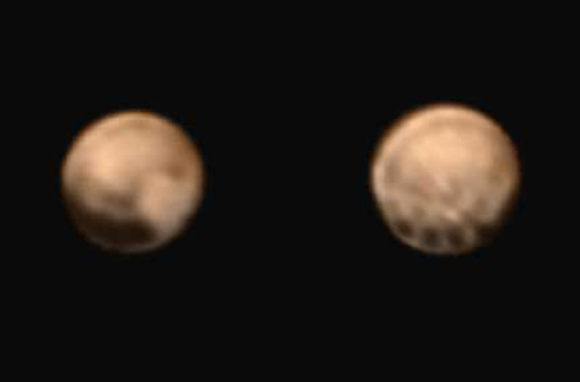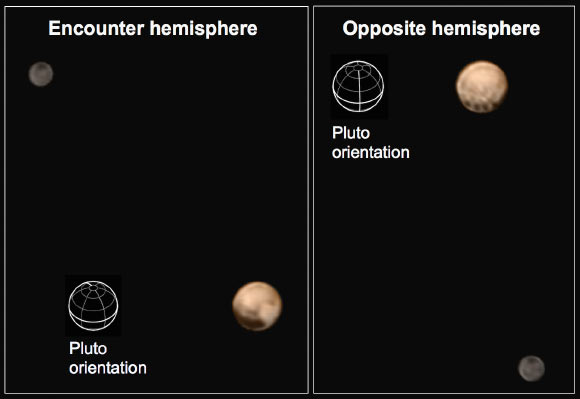Scientists with NASA’s New Horizons mission have combined black-and-white images of Pluto and its largest moon, Charon, from New Horizons’ LORRI imager with color data from the spacecraft’s Ralph instrument to produce these views.

New images show two very different faces of Pluto, one with a series of strange spots. About half of the dwarf planet is imaged, which means features shown near the bottom are at the equatorial line. Image credit: NASA / Johns Hopkins University Applied Physics Laboratory / Southwest Research Institute.
New images from the mission show two different faces of the dwarf planet, one with a series of mysterious spots along the equator that are evenly spaced. Each of the spots is roughly 300 miles (480 km) in diameter.
New Horizons scientists have yet to see anything quite like the dark spots; their presence has piqued the interest of the team, due to the remarkable consistency in their spacing and size.
While the origin of the spots is a mystery for now, the answer may be revealed as the spacecraft continues its approach to the mysterious dwarf planet.
“It’s a real puzzle – we don’t know what the spots are, and we can’t wait to find out. Also puzzling is the longstanding and dramatic difference in the colors and appearance of Pluto compared to its darker and grayer moon Charon,” said Dr Alan Stern of the Southwest Research Institute, who is the principal investigator for New Horizons.

These images show Pluto and its largest moon, Charon. Image credit: NASA / Johns Hopkins University Applied Physics Laboratory / Southwest Research Institute.
“We see the planet and its largest moon in approximately true color, that is, the way they would appear if you were riding on the New Horizons spacecraft,” he added.
New Horizons is now less than 9.5 million miles (15 million km) from the Pluto system. It’s healthy and all systems are operating normally.
After a nine year and more than 3.6 billion mile trip, plans call for the probe to provide the first close up observations of Pluto.
“Of course we have seen it before, but we have never seen Pluto like we are going to see it on July 14,” said Dr Dava Newman, NASA Deputy Administrator.







